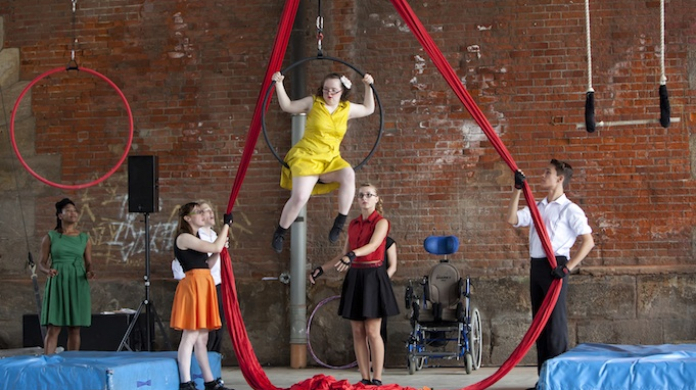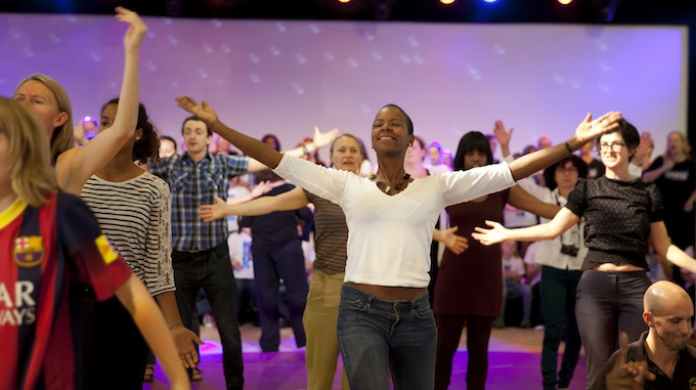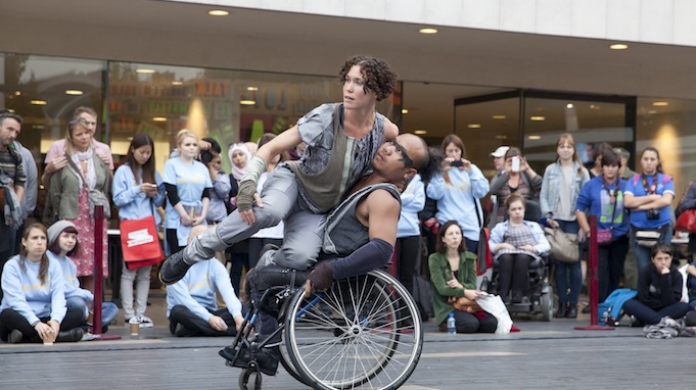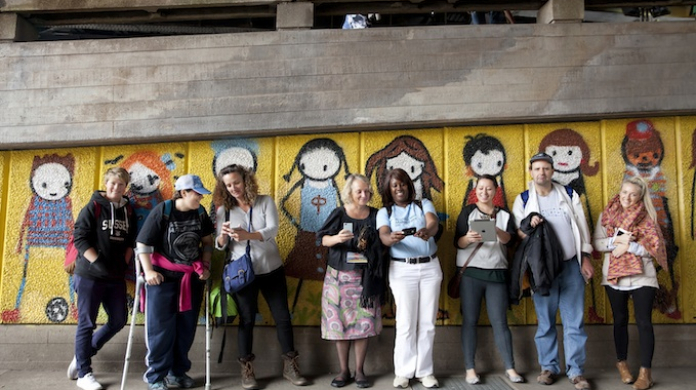Volodymyr Sheyko reflects on the successes of September's Unlimited Festival, and considers the implications for international touring
"My Deafness is my ability"
Last week I returned from the second edition of Unlimited, a festival of new work by disabled artists in the UK supported by the British Council. I came back with plethora of impressions and questions which I’d like to share and discuss with colleagues around the world who contemplate touring disability arts to their countries.
"I thought how to use my deafness as an ability", said Chisato Minamimura during her post-show Q&A, answering a question about her dance piece that examined sound and music from a deaf person’s perspective. Chisato did exactly that – she directed a musicless dance performance in which sounds that dancers made on stage were visualised live through a digital projection operated by another artist.
"a unique festival that encourages artists to challenge themselves and their audience with new work"
It was fresh, challenging and unusual. I think Chisato’s quote and the above example perfectly describe all of Unlimited – a unique festival that encourages artists to challenge themselves and their audience with new work and, above all, is a great platform where great art emerges and exists beyond prejudice, limitations or boundaries. It was obvious in many conversations and talks that Unlimited was much needed and appreciated in the UK, because it gave artists unparalleled opportunities to create work, access new audiences, drive social change and make their collective voice heard loud and clear.
This year’s Unlimited commissions are strikingly personal and fearless: they tell the artists’ own life stories and those of their friends, relatives or even random acquaintances, revealing a world otherwise unfamiliar or even obscure. They do it in many ways: provocative, explicit, subtle, uncomfortable, moving, enjoyable and funny, and, for the most part, they succeed. It is very powerful that the festival takes place in a busy central London venue that is swarming day and night, which makes Unlimited and its artists much more visible, accessible and… well, mainstream.
The key to understanding and embracing disability arts work that I learned during the staff training session was the social model of disability – a discourse that revolves around social and environmental barriers to one’s ability and opportunities, rather than one’s medical condition or physical impairments. "It is not my clinical diagnosis (which, in this respect, is meaningless) that prevents me from doing something – it’s the environment and the society that cannot meet my needs and access requirements."
This statement goes side by side with the question that preoccupied me the most – how would I promote Unlimited works over seas, particularly in societies that are much less receptive, aware and open-minded? I wish I could fully agree with Tony Heaton from Shape Arts who thought it wasn’t a terribly big deal – just be reasonable with imagery, seek artists’ advice and communicate this work as you would any other.
"It’s a challenge to seamlessly convey a message across cultures and languages when you tour..."
Well, not so fast. For example, in the infamously exclusive post-Soviet societies a disabled person has been marginalised and labelled ‘invalid’ for decades, and it’s particularly difficult to reach out to people with disabilities who largely remain disadvantaged and isolated. It’s hard to overcome judgmental perceptions of disability and convince public to appreciate art by its quality and nothing else. It’s a risk to tour a production that contains explicit scenes and strong language. It’s a challenge to seamlessly convey a message across cultures and languages when you tour an intimate conversational piece or a production that relies on narration.
Having said that, I realised what a tremendous backstage work needs to be done to a) weave the Unlimited works into a local disability discourse; b) attract and, more importantly, develop a wide and diverse audience who are willing to appreciate disability arts; c) find the right narrative in a local context to communicate the piece; d) deal with accessibility of venues and quality of media critique, and find the right partners.
All in all, do artists and commissioners think about challenges of touring when they conceive the works? Do we engage over seas staff in planning and commissioning? How to balance the artistic integrity of a piece with its suitability for international touring? Are we ready to make difficult decisions about what’s appropriate and good, and what’s not?
I hope we will make this work because Unlimited is an incredible experience worth sharing with the rest of the world. After all, we all feel the same emotions. When Julie McNamara tells an incredibly moving story of her mother’s descent into dementia, I remember my dear ones who won or lost battles with their bodies and minds. As Robert Softley Gale speaks about exclusion and physical pain, I’m sure anyone could find his words all too familiar. When Claire Cunningham gives up dancing to talk about religion and disability, I scrutinise my own beliefs and open up to others’. Wendy Hoose, an outrageously funny and ribald comedy of manners, reminds you how close and inseparable joy and sadness are – both on and off the stage. This is precious, and not to be missed.
Volodymyr Sheyko is Regional Marketing and Communications Manager, British Council Wider Europe.



